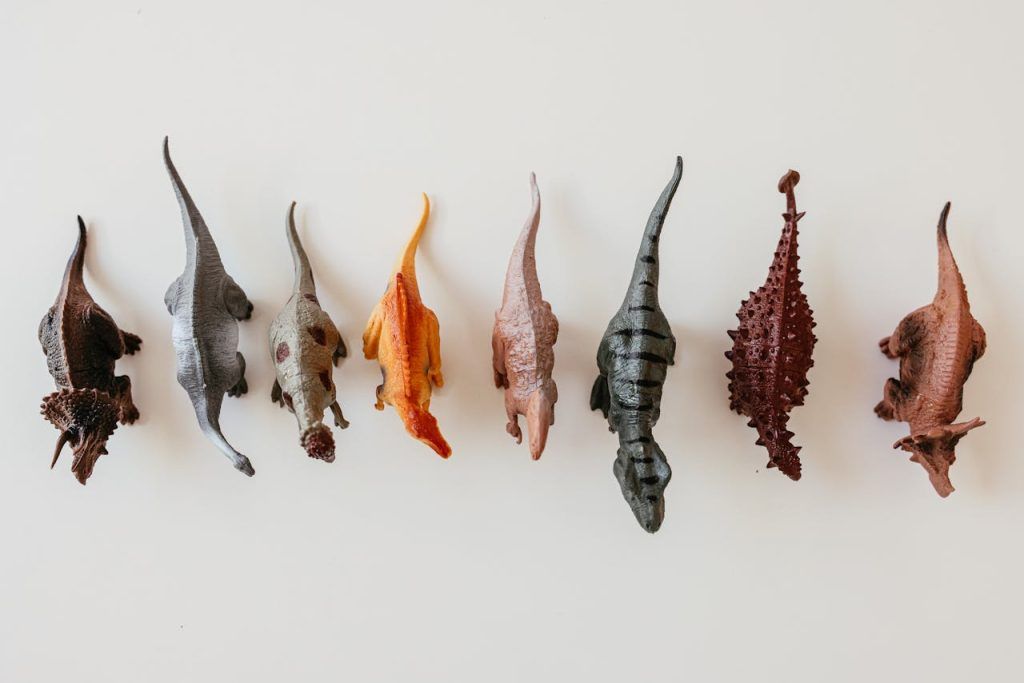
Early Dinosaurs Outran Competitors To Dominate Earth For 160 Million Years
|
Getting your Trinity Audio player ready...
|
The first dinosaurs thrived on Earth for so long by outrunning their competitors, a new study has found.
The early dinosaurs – described as ‘nippy little insect eaters’ – evolved their gaits to move fast and catch prey whilst avoiding larger predators.
Researchers say they proved quicker and more dynamic than their competitors, which allowed them to go on to dominate our planet for 160 million years.
Scientists from the University of Bristol compared limb proportions of reptiles from the Triassic period to discover that they boasted a much wider range of running styles than some of their close competitors.

The Triassic period refers to the period between 252 and 201 million years ago when the dinosaurs first appeared and rose to dominance.
The study, published in Royal Society Open Science, compared limb proportions of a wide range of reptiles from this period.
The researchers identified which of these ancient beasts were quadrupedal or four-footed, and which were bipedal – two-footed.
They also looked at the reptiles’ cursoriality index; a measure of their running ability.
The researchers found that from the beginning the dinosaurs were not only both bipedal and quadrupedal – meaning they had limbs adapted for running – but also that they demonstrated a wider range of running styles than their competitors, the Pseudosuchia.
Some of these pseudosuchians, a group that included ancestors of modern crocodiles, were small, insect-eating bipeds, but most were medium-to-large-sized carnivores and herbivores that were diverse throughout the Triassic period.
The research team, led by MSc Palaeobiology student Amy Shipley, found dinosaurs and their kin, known as the Avemetatarsalia, maintained a higher range of locomotory modes throughout this period.
“When the crunch came, 233 million years ago, dinosaurs won out,” Ms Shipley explained.
“At that time, climates went from wet to dry, and there was severe pressure for food.
“Somehow, the dinosaurs, which had been around in low numbers already for 20 million years, took off and the pseudosuchians did not.

“It’s likely the early dinosaurs were good at water conservation, as many modern reptiles and birds are today.
“But our evidence shows that their greater adaptability in walking and running played a key part.”
Mike Benton, a Professor of Vertebrate Paleontology at the University of Bristol’s School of Earth Sciences, added: “After the end of the Triassic, when there was a mass extinction, the dinosaurs expanded again.
“Most of the pseudosuchians were wiped out by the mass extinction, except for the ancestors of crocodiles, and we found that these surviving dinosaurs expanded their range of locomotion again, taking over many of the empty niches.”
Co-author Dr. Armin Elsler added that, surprisingly, the dinosaurs didn’t evolve particularly fast – but were always well equipped to take advantage of opportunities following a crisis.
“When we looked at evolutionary rates, we found that, in fact, dinosaurs were not evolving particularly fast,” Dr. Elsler said.
“This was a surprise because we expected to see fast evolution in avemetatarsalians and slower evolution in pseudosuchians.
“What this means is that the locomotion style of dinosaurs was advantageous to them, but it was not an engine of intense evolutionary selection.
“In other words, when crises happened, they were well placed to take advantage of opportunities after the crisis.”
Dr. Tom Stubbs, another collaborator on the study, added that though we think of dinosaurs being ferocious, meat-eating giants, they actually began life far from those beasts they would eventually evolve into.
“We always think of dinosaurs as huge and lumbering,” Dr. Stubbs said.
“This reminds us that, actually, the dinosaurs started as nippy little insect-eaters. The first dinosaurs were only a meter long, up high on their legs, and bipedal.
“Their leg posture meant they could move fast and catch their prey while escaping larger predators.”
Dr. Suresh Singh, another co-author added: “Their diversity of posture and focus on fast running meant that dinosaurs could diversify when they had the chance.
“After the end-Triassic mass extinction, we get truly huge dinosaurs, over ten meters long, some with armor, many quadrupedal, but many still bipedal like their ancestors.
“The diversity of their posture and gait meant they were immensely adaptable, and this ensured strong success on Earth for so long.”
Produced in association with SWNS Talker
“What’s the latest with Florida Man?”
Get news, handpicked just for you, in your box.



